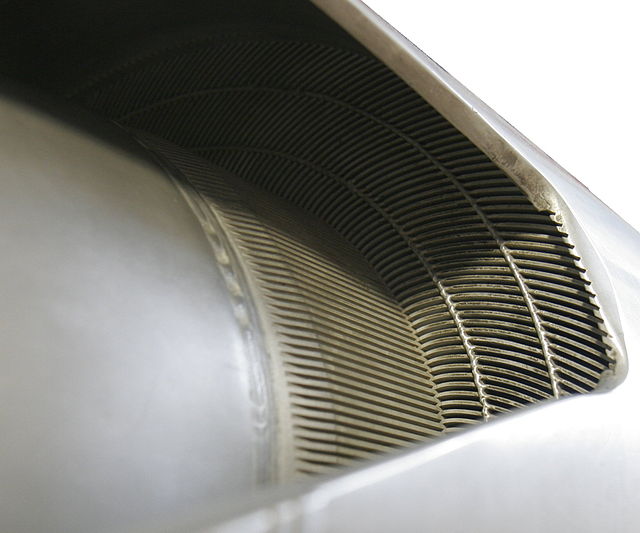Zirconium alloys are solid solutions of zirconium or other metals, a common subgroup having the trade mark Zircaloy. Zirconium has very low absorption cross-section of thermal neutrons, high hardness, ductility and corrosion resistance. One of the main uses of zirconium alloys is in nuclear technology, as cladding of fuel rods in nuclear reactors, especially water reactors. A typical composition of nuclear-grade zirconium alloys is more than 95 weight percent zirconium and less than 2% of tin, niobium, iron, chromium, nickel and other metals, which are added to improve mechanical properties and corrosion resistance.
Medal minted in zirconium, with the metal produced from 1947 by the Albany Metallurgical Research Center for the manufacture of the nuclear reactor of the submarine Nautilus
Scanning electron micrograph showing the microstructure of Zircaloy-4.
Nuclear fuel is material used in nuclear power stations to produce heat to power turbines. Heat is created when nuclear fuel undergoes nuclear fission.
Close-up of a replica of the core of the research reactor at the Institut Laue-Langevin
Nuclear Regulatory Commission (NRC) photo of unirradiated (fresh) fuel pellets.
NRC photo of fresh fuel pellets ready for assembly.
NRC photo of fresh fuel assemblies being inspected.






